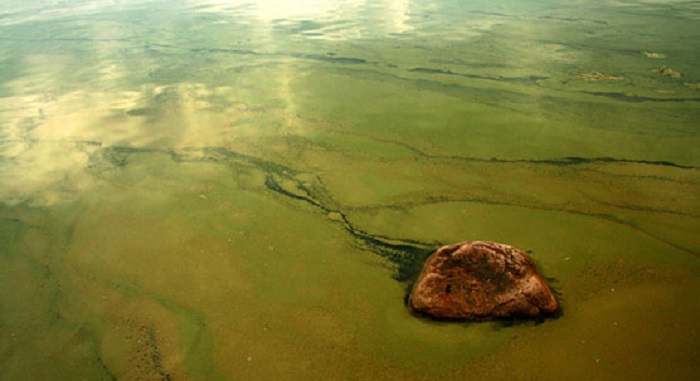High risk for blue-green algae blooms in sea forecast
Published : 03 Jun 2017, 01:44
Updated : 03 Jun 2017, 10:41
The risk for vast blue-green algae blooms in the Gulf of Finland is higher during the summer this year compared to the previous years, the Finnish Environment Institute ( SYKE) said.
The exceptional nutritional conditions are caused partially by major Baltic inflows from the North Sea in 2014 and 2016, which allowed the phosphorous deepwater to reach the Gulf of Finland, said a SYKE press release.
In addition, the lack of winter ice and the windy winter mixed the water layers and brought nutrition to the surface layer of the Gulf of Finland.
Significant algae blooms may also be seen in the northern section of the main basin of the Baltic Sea, the Archipelago Sea and the southern section of the Bothnian Sea.
According to SYKE, the risk of blue-green algae blooms forming in Finnish open sea areas is high in the Gulf of Finland, with the exception of the eastern part of the gulf.
In addition, the risk is significant in the northern section of the main basin of the Baltic Sea, the Archipelago Sea and the southeastern section of the Bothnian Sea.
The risk of algae blooms in the central sections of the Bothnian Sea is moderate and low at the northern sections of the Bothnian Sea and the Bay of Bothnia.
Weather conditions are the most significant factor affecting the forming of algae blooms. The most plentiful blooms will occur if periods of heavy winds and high pressure systems alternate over the summer so that the nutrients from deeper waters feed the growth of algae and the water temperature rises to favour algae growth.
Algae accumulation may occur at some shoreline locations, due to wind and current conditions. The peak of blue-green algae blooms in Finnish marine areas occurs usually at the end of July and early August. The blooms may locally occur late into the autumn, but they are not as plentiful as during the summer.


